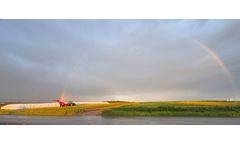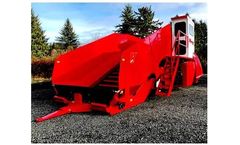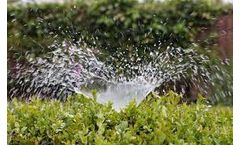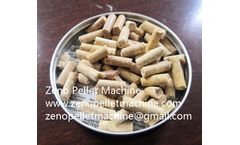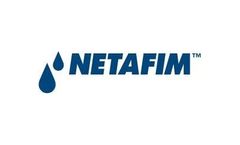Refine by
Forage Crop Articles & Analysis
25 articles found
In much of Canada, the growing season is significantly shorter than in many parts of the U.S. This limits the types of forage crops that can be reliably grown and harvested for silage. While many U.S. dairies rely heavily on corn silage, Canadian dairies often depend on legume- grass silage mixes, barley silage, or triticale that are better suited to cooler ...
As a cost saving alternative to dry grain supplementation, bagged snaplage/earlage offers high energy content and easy digestibility Dietary supplementation with dry grains has traditionally been utilized as an economical way to meet the high energy demands of the herd, particularly when forage is scarce or of low quality. However, dairy farmers are increasingly turning to high moisture corn ...
Cattlemen are increasingly turning to bagged silage for flexible feed management. The most fundamental beef cow feeding strategy remains the use of pasture, which is considered the lowest-cost feed resource. Therefore, many cattle operations aim to maximize pasture time annually to benefit from labor, manure management, physical activity, and nutrition advantages. ...
Alfalfa grown for forage is a major crop in many areas of the western United States. In the arid and semi–arid west, irrigation is required to obtain economic alfalfa yields. Because alfalfa is a perennial crop with a potentially long growing season, it can use a substantial amount of water. ...
Abstract California has become the leading dairy products producing state in the USA. This has resulted in farms commonly milking several thousand cows per day. The care and feeding of the animals has produced large waste streams commonly collected and stored in lagoons. Environmentally safe handling and reuse of the lagooned wastewater is the objective of this study. A system of Subsurface Drip ...
The project site is divided into eight separate subsurface drip irrigated blocks consisting of three banana plots, two papaya plots, two bermuda turf grass plots, and one giant bermuda pasture grass plot. The banana and papaya crops were selected on the basis of marketability, the bermuda grass turf for use in landscape applications and giant bermuda grass as a cattle ...
The moisture content of vegetable meal, bran, fish meal, etc. should not exceed 12%. The forage crops must be dried quickly after harvest, and the drying must be uniform and consistent. ...
RFID readers fitted to the entrances of the test colonies were used to monitor the activity of the tagged bees for the duration of 5 week flowering period of the crop. These activity data were analysed to assess any impact on flight activity of bees foraging on the treated compared to untreated crops. Honeybees were seen to be actively ...
Obrazets 666) after treatment with organic fertilizer were studied in a field trial carried out at the Institute of Forage Crops, Pleven, Bulgaria. Humustim as organic fertilizer was applied through presowing treatment of seeds, treatment during vegetation and combination between both, at different doses. ...
The use of flood and center pivot irrigation of crops via the waters of the Ogallala Aquifer is as hot a discussion topic as the current drought. ...
Conversion from annual cropping to perennial forages may be a beneficial management practice (BMP) to reduce runoff quantity and improve surface water quality. ...
Abstract California has become the leading dairy products producing state in the USA. This has resulted in farms commonly milking several thousand cows per day. The care and feeding of the animals has produced large waste streams commonly collected and stored in lagoons. Environmentally safe handling and reuse of the lagooned wastewater is the objective of this study. A system of Subsurface Drip ...
Living mulches can function to supply forage in multifunctional cropping systems. Information quantifying nutritive value of forage plants in living mulch cropping systems is limited. The objective of this research was to quantify the nutritive value of forages from different plant functional groups managed as ...
The benefits of cover crops within crop rotations are well documented, but information is limited on using cover crops for forage within midwestern United States cropping systems, especially under no-tillage management. Our objective was to evaluate plant, animal, and soil responses when integrating winter cover ...
Managing forages as living mulches during row crop production requires suppressing the forages to produce economical crop yields. ...
Alfalfa (Medicago sativa L.) is an important forage crop in many countries with high biomass production and the third-most-cultivated crop in the United States, with high protein content and potential use as biofuel. ...
Thanks to different priorities in the evaluation of forage crops like forage pea [Pisum sativum L. ssp. sativum var. arvense (L.) Poir.] in comparison with the pulse legumes, namely N accumulation and biomass production per crop area unit, the deleterious effect of supernodulation might be less perceived in the background of ...
In climates where cool seasons can produce a forage crop, annual grasses and forbs can be used on dairies to recycle nutrients back to the animals and to phytoremediate soils high in P or N. ...
In the region, wheat can be grown for either grain-only, forage-only, or for both fall–winter forage + grain (dual-purpose). This study was conducted to determine the net returns of five alternative wheat production systems, for both CT and no-till (NT). The five production systems included one for forage-only, two for dual-purpose (fall–winter ...
Voluntary intake potential of a forage crop is generally considered to be the most important feed characteristic regulating animal performance. Efforts to develop forage crops with reduced bulk volume, measured by neutral detergent fiber (NDF) concentration, have been associated with reduced plant fitness. ...

